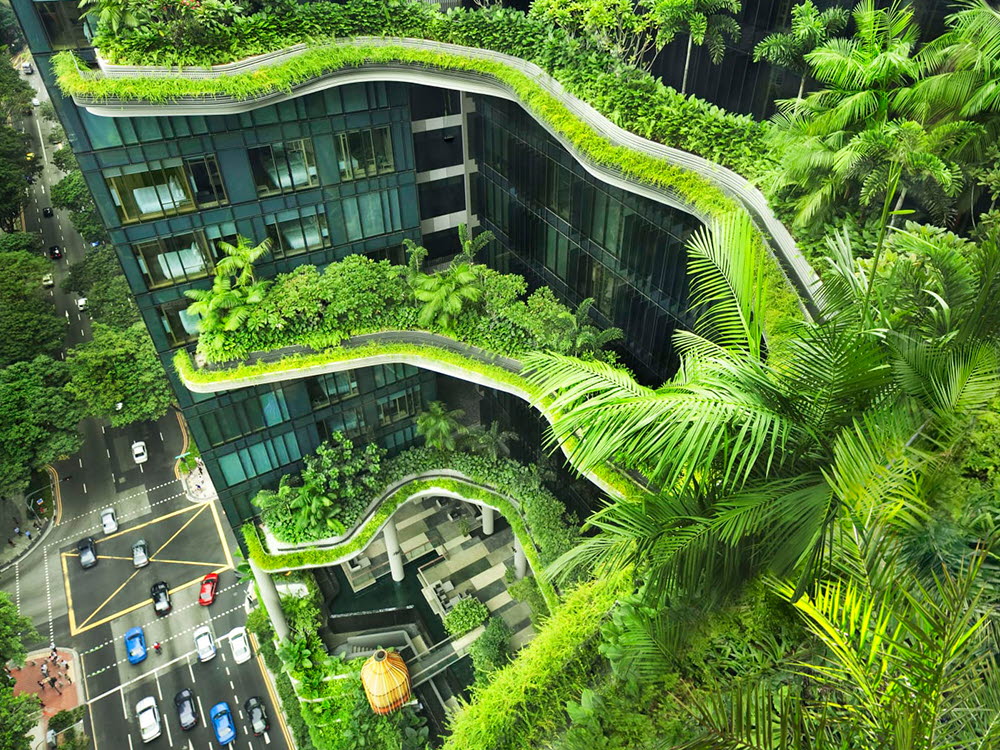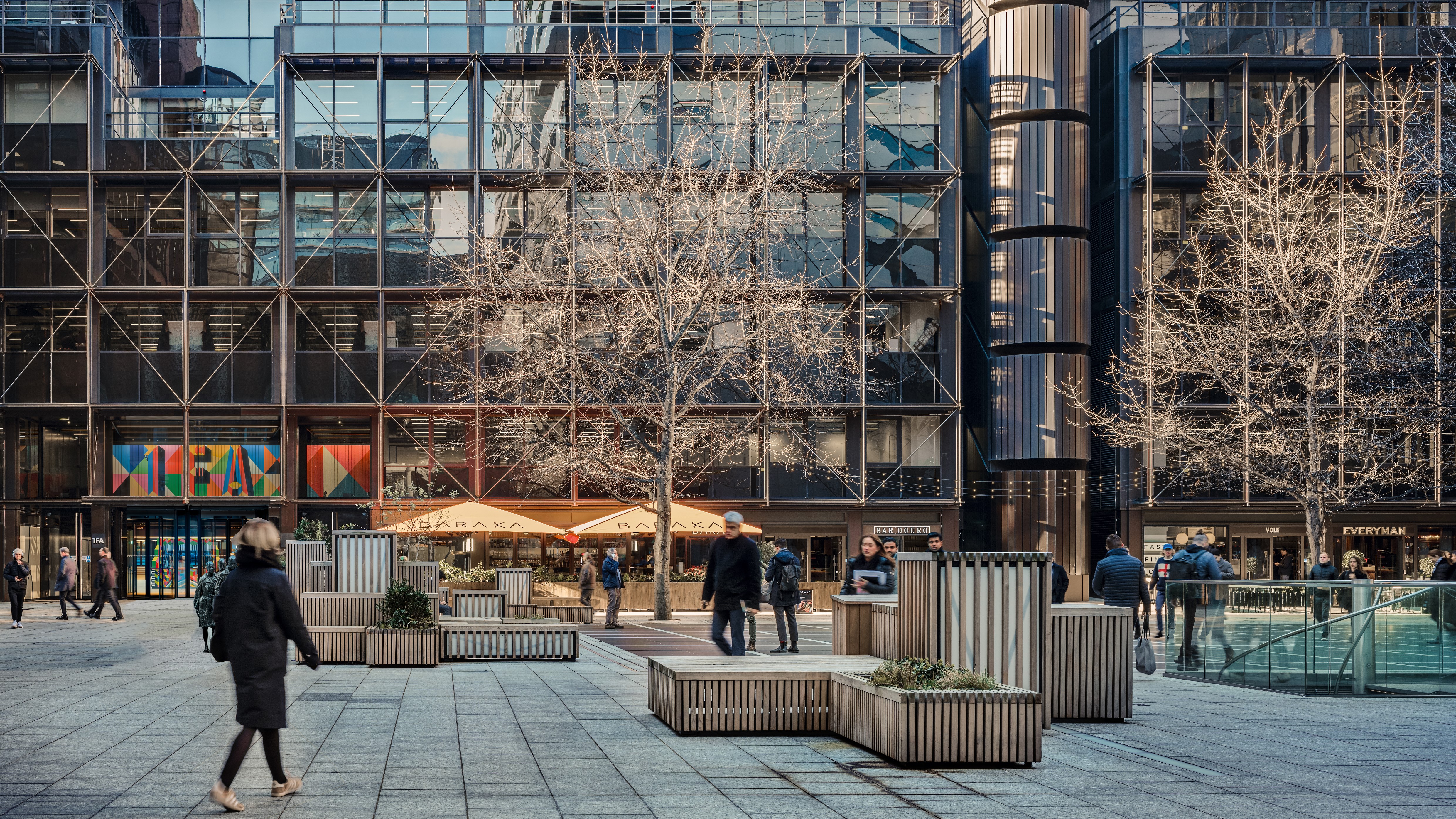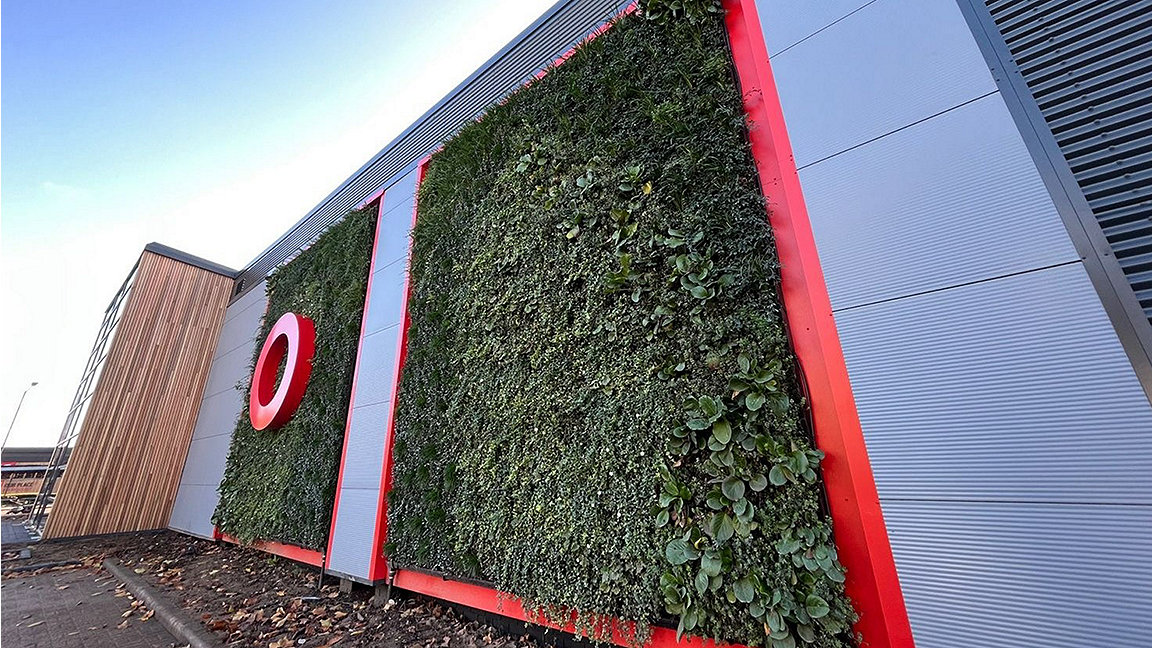
Living green wall © Pexhurst
As the government acts to decarbonise all sectors of the UK economy to hit its legally binding target of net-zero greenhouse gas emissions by 2050, the commercial real estate sector is considering how it can sustain low-carbon growth in the future.
The traditional industrial warehouse space is evolving. Today, warehouses are the offices of the future; they could sit comfortably alongside a city's latest state-of-the-art offerings. Whilst these transformed traditional warehouses celebrate their industrial past – with brickwork, steelwork, mechanical and electrical services and even insulation on view – they also offer flexibility and an end to the strip-out and refit cycle of the past.
As warehouses are reimagined, there is also rising interest in these spaces being environmentally friendly. The RICS sustainability report 2022 shows that occupier and investor demand for green buildings is growing.
Sustainability is no longer just an afterthought or a 'tick box' public relations exercise for an incoming tenant trying to meet their environmental, social and governance responsibilities, or an investor or landlord hoping to boost the potential return on their investment because of the market premiums on 'green' buildings.
There has been a seismic shift in investor, landlord and occupier attitudes and behaviours in favour of making decisions that will reduce environmental impact, reduce operational costs, and ensure business continuity in the long term. Short-term goals are just that, short sighted. Decisions must be made now to support a sustainable future.
According to the Building Research Establishment (BRE), demand for the BRE Environmental Assessment Method (BREEAM) is rising 20% year on year. It would come as no surprise if these built environment sustainability assessments became compulsory in future to help the UK meet its sustainability goals.
Regulation may already be prompting greater concern with sustainability, as owners and landlords look to limit their risk exposure. From 1 April 2023, the Minimum Energy Efficiency Standards (MEES) will require all rented commercial properties to hold an energy performance certificate (EPC) rating of band E or better, including properties in the middle of their lease term.
There are some exemptions, but the vast majority of commercial real-estate owners will need to make improvements. Failure to do so will see landlords face potential fines of up to £150,000. Future government proposals could see the minimum rating increase to band C by April 2027 and band B by April 2030.
'The RICS sustainability report 2022 shows that occupier and investor demand for green buildings is growing'
Estate seeks to eliminate embodied carbon
But some real-estate owners are already rising to the challenge. Slough Trading Estate in the Thames Valley is the largest such estate in Europe under single ownership. Owned and managed by SEGRO, it hosts many of the world's most successful companies including Mars, Ferrari and DHL.
SEGRO has committed to eliminate, as far as possible, all embodied carbon emissions across its portfolio by 2030. This includes all indirect emissions in the value chain of its corporate carbon footprint, referred to as scope 3 emissions under the Greenhouse Gas Protocol Corporate Standard.
As part of this effort, contractor Pexhurst and contract administrators Hollis were commissioned to refurbish an existing warehouse at 160–161 Bestobell Road on the estate. The unit had been built in 1988, providing 1,877.57m2 of commercial space, including warehousing and offices. SEGRO targeted a BREEAM excellent rating and an EPC rating of A+ before the start of the refurbishment.
Work on the warehouse included the installation of a green living wall on part of the building's facade. The planting is bespoke and selected by the client on placement of the order with specialists ANS Global. It is designed to encourage wildlife and will produce 94kg of oxygen and extract 71kg of carbon dioxide a year.
Electric vehicle chargers and cycle shelters with rich biodiverse growing roofs and wildlife habitat panels were also installed, encouraging people to travel to work by sustainable means supporting a net-zero carbon future. Furthermore, Pexhurst installed 136kW of solar photovoltaics on the roof of the warehouse, with the aim of saving 26 tonnes of carbon dioxide annually – the equivalent of planting more than 1,200 trees a year.
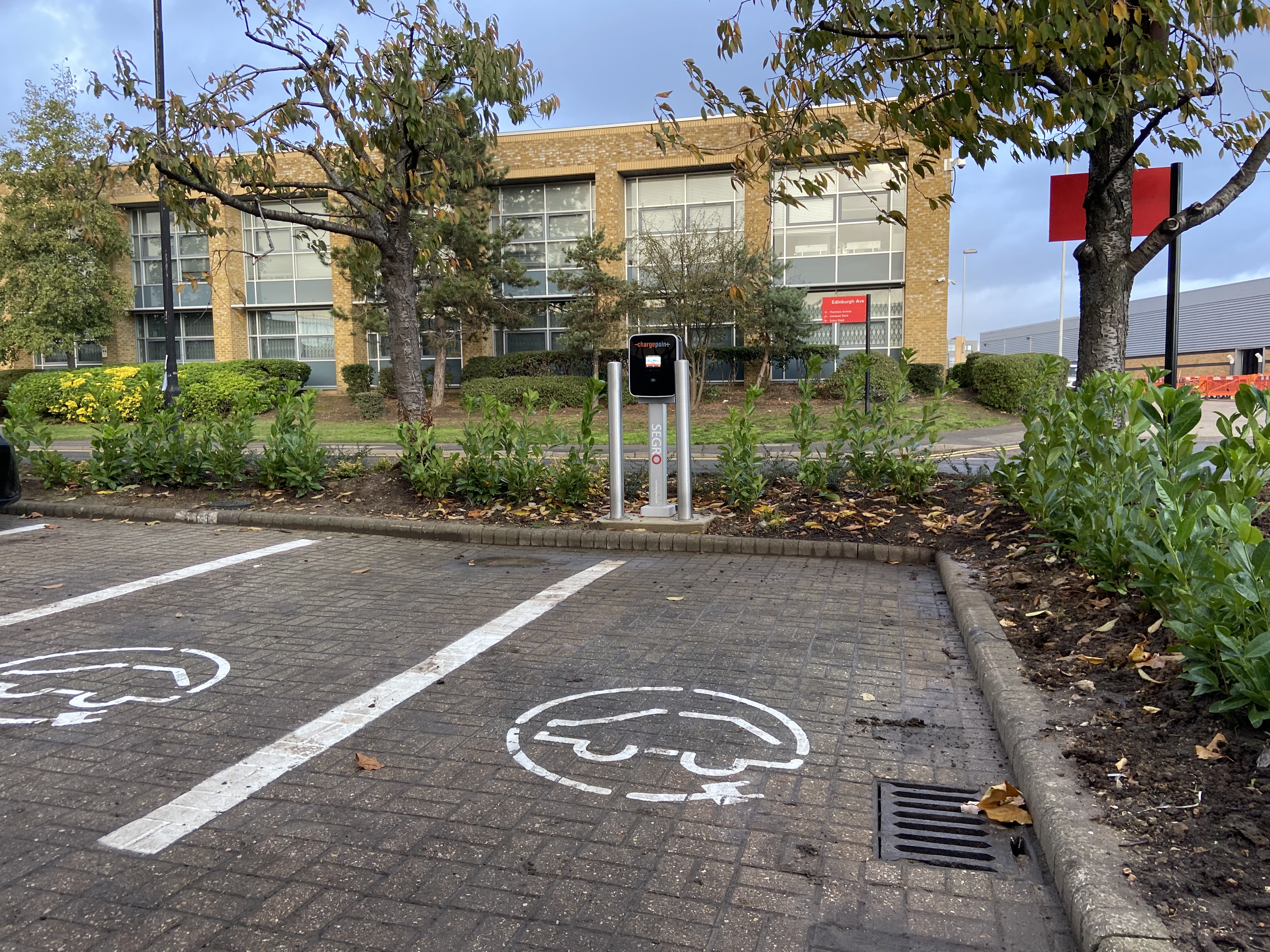
EV charging point © Pexhurst
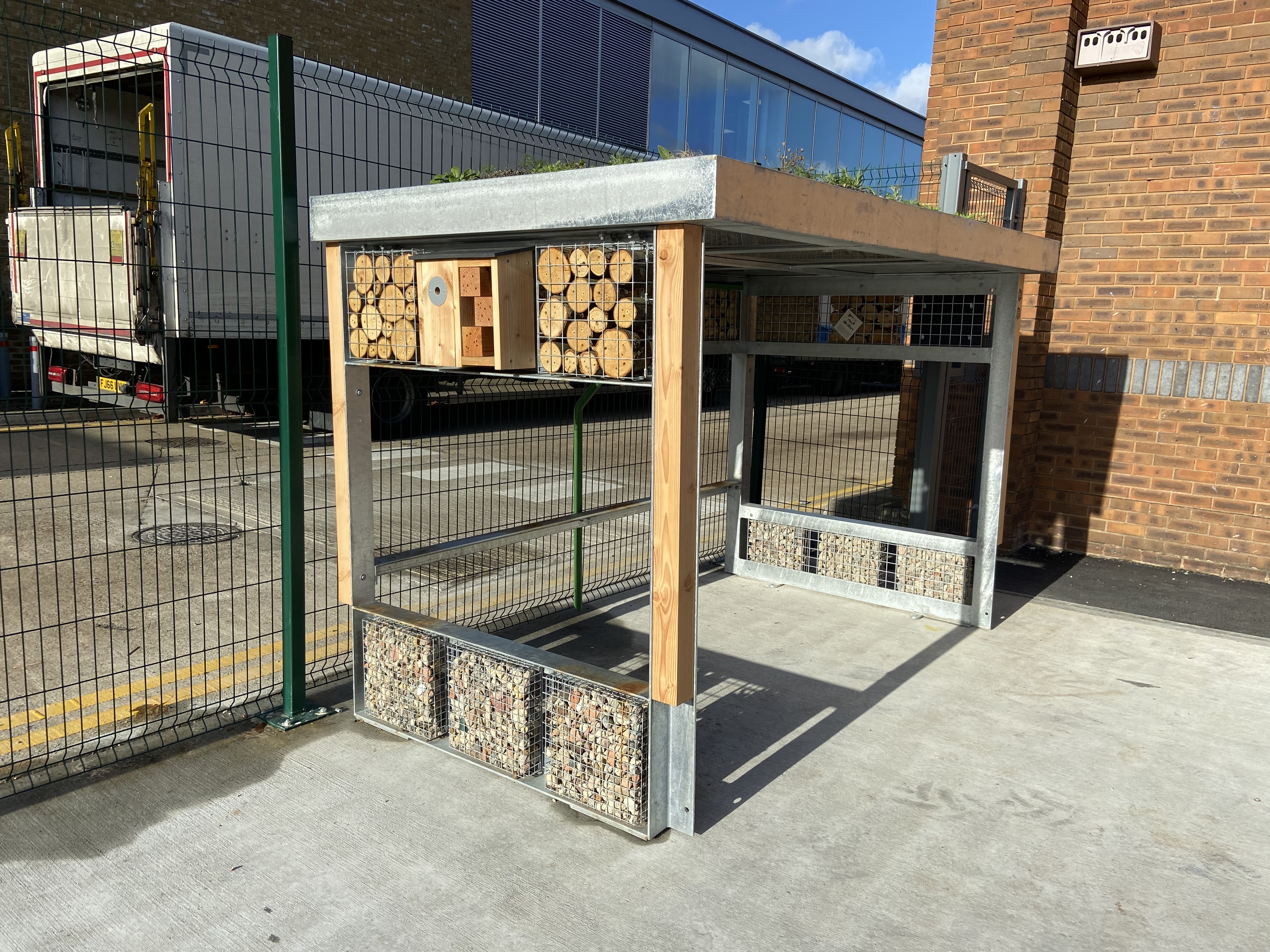
Bike shelter and bug hotel © Pexhurst
SEGRO was also keen to create a full-height atrium at the entrance to the warehouse to give it a corporate feel and be aesthetically pleasing. The original structure was steel frame but, unusually, it also used masonry to provide primary support. This meant that the primary steelwork in the small reception area had to be cut and repurposed to create the large, open-plan reception space the client envisaged.
Further internal work included the installation of energy-efficient LED light fittings with passive infrared and daylight sensors, meaning they only switch on if people are in the room. The sensors also take into consideration the existing light into the room via windows and offset the intensity of the light from light fittings.
Pexhurst installed air-source heat pumps, mechanical fresh air ventilation and carbon dioxide sensors to reduce energy consumption as well. The design also includes waterless urinals, self-closing push taps and dual-flush WC cisterns to minimise water consumption. Meanwhile, all carpets are carbon neutral.
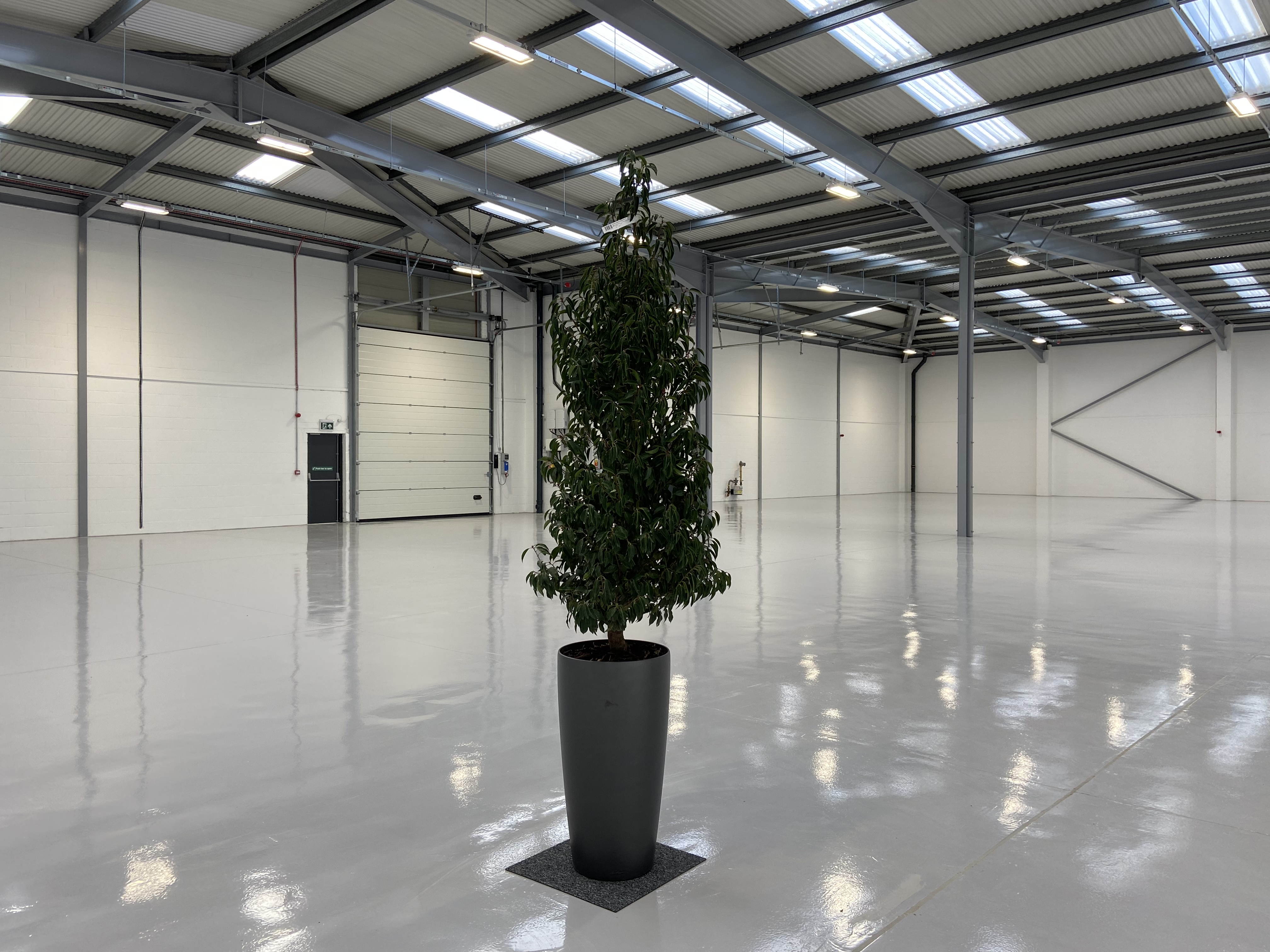
View of warehouse interior © Pexhurst
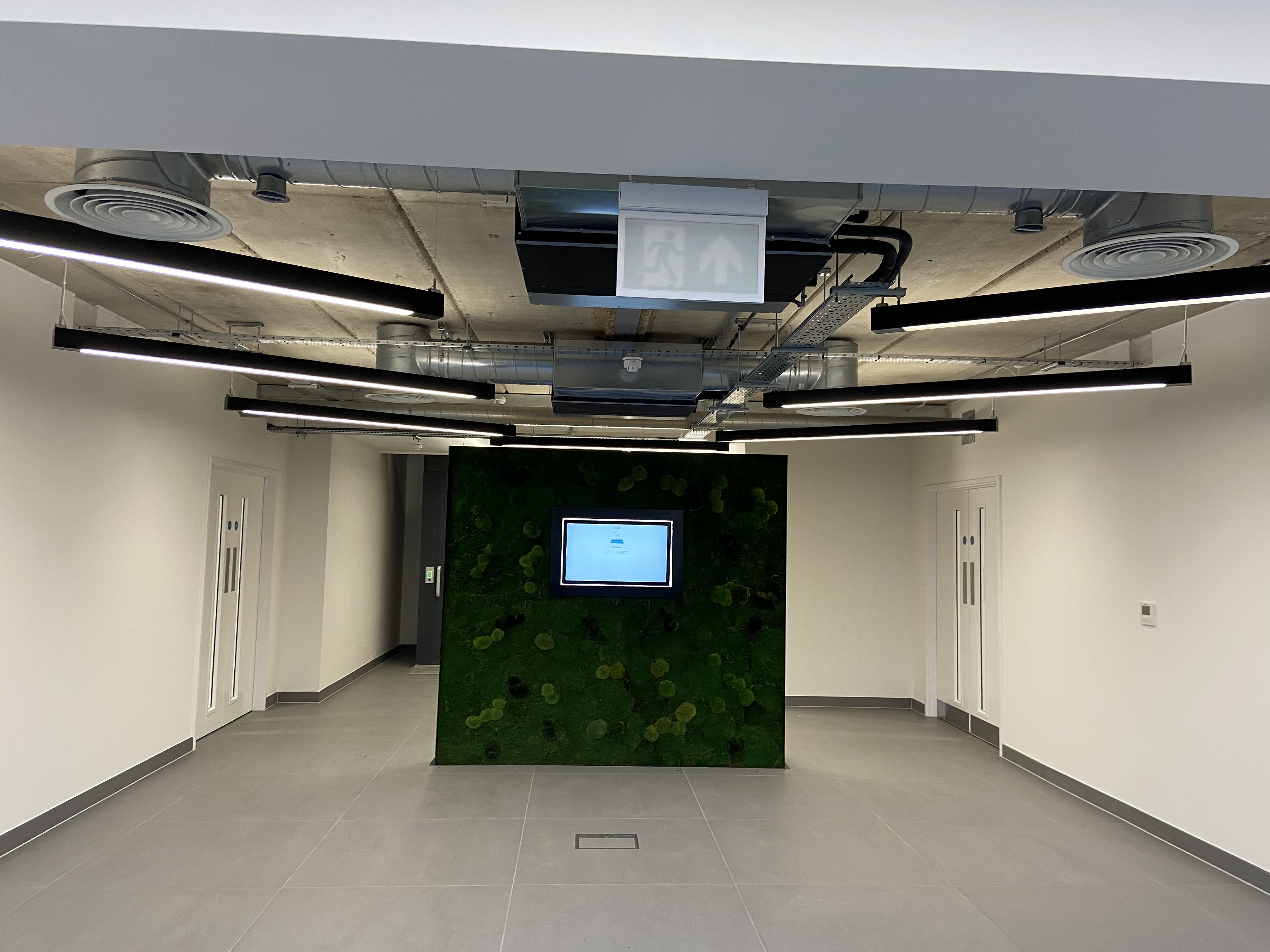
Reception area © Pexhurst
Following the refurbishment, the building was assessed and successfully met its EPC target. It is now awaiting the results of its BREEAM assessment. If the building achieves an excellent rating, it will be in the top 10% of refurbishment or fit-out projects in the UK; but it has the potential to achieve a BREEAM outstanding rating, which would place it in the country's top 1%.
Pexhurst has an in-house BREEAM advisory professional who worked alongside the client's equivalent to ensure that the project's BREEAM target was met. They provided support to all the teams involved in the project to identify and explore options for achieving the desired sustainability outcomes relevant to the scheme. They also supported the collation of all the necessary evidence needed for the formal assessment and certification application.
It is clear that, as more traditional real-estate stock such as industrial warehouses is being transformed into flexible, modern, hybrid working spaces, the time is also right to make these buildings sustainable.
The endless strip-out and refit cycle needs to end and be replaced with a whole-life cycle approach. Could this model be adopted by the wider sector? The answer is simply yes, the built environment needs change if we are to achieve a future that is carbon free.
RICS champions sustainability across professions
With the built environment estimated to be responsible for around 40% of global carbon emissions, RICS is championing sustainable practices across the built and natural environment. We are also empowering professionals to embed sustainability considerations into the way they work and better measure environmental impacts.
